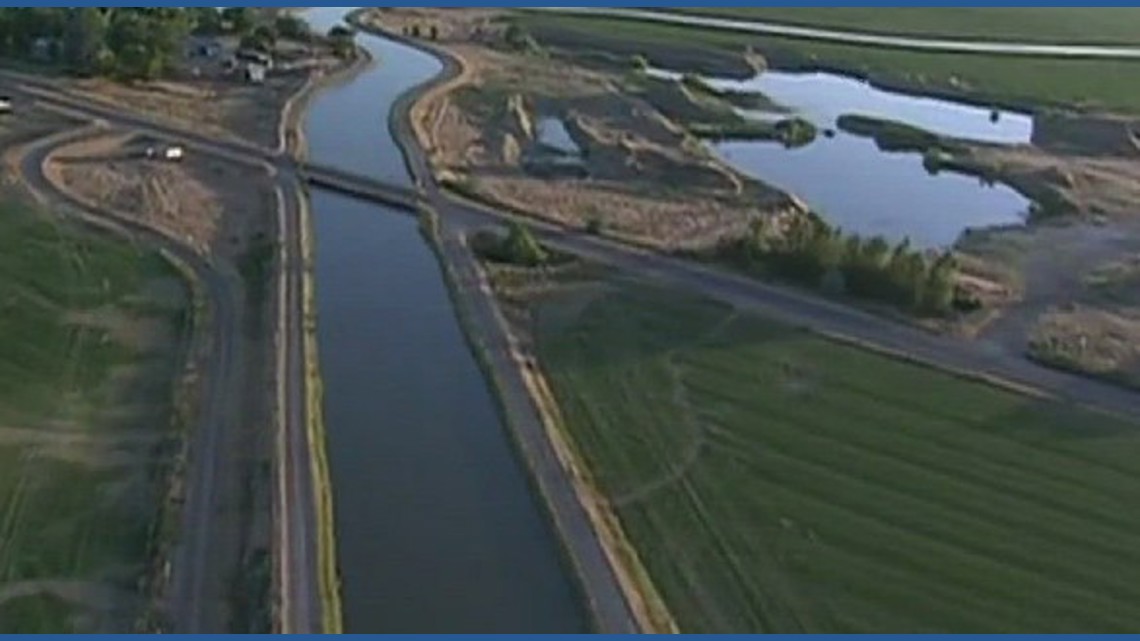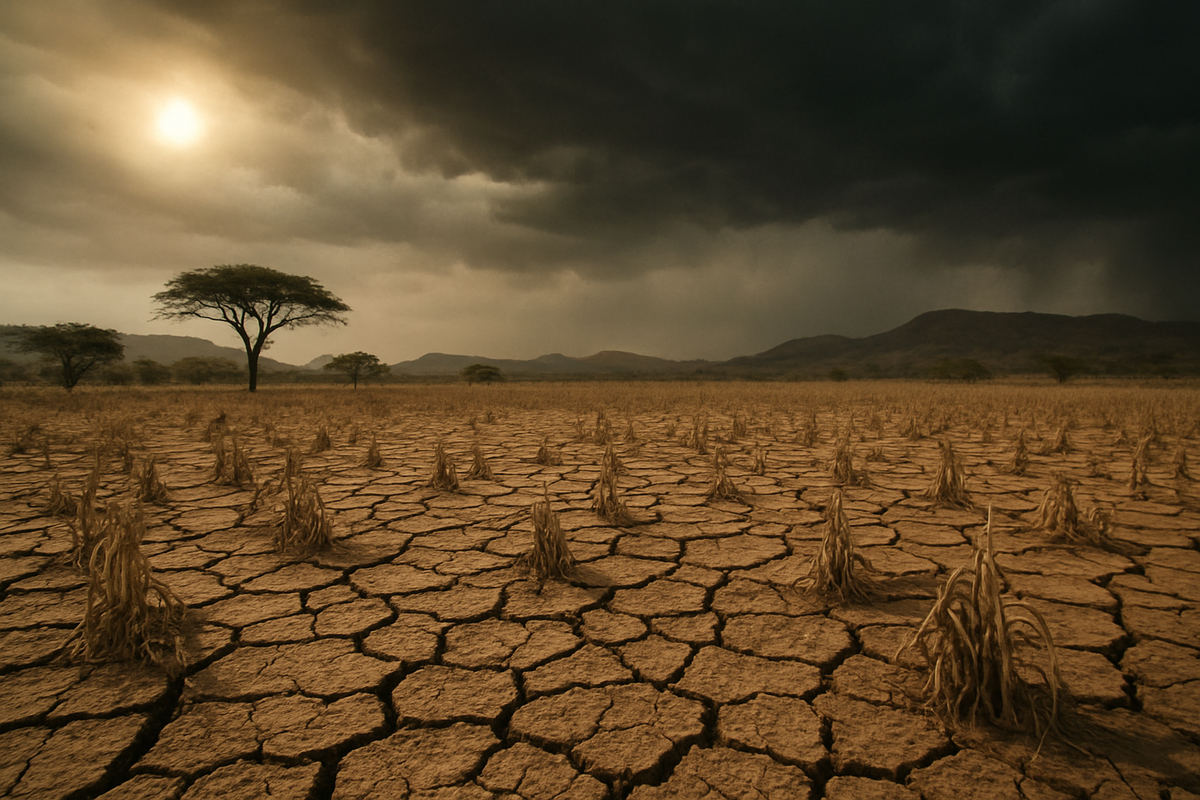Twin Falls set to shut down irrigation system for winter starting Oct. 20 – KTVB

Report on the Seasonal Shutdown of the Twin Falls Pressurized Irrigation System and its Alignment with Sustainable Development Goals
Introduction and Procedural Overview
The City of Twin Falls has announced the scheduled shutdown and winterization of its pressurized irrigation system, commencing on October 20. This annual procedure is essential for equipment maintenance and the prevention of damage from freezing temperatures. The system will remain inactive until its scheduled restart in late April. This initiative represents a significant contribution to local and global sustainability efforts, particularly the United Nations Sustainable Development Goals (SDGs).
Residents can monitor the status of their specific neighborhood irrigation station via the Twin Falls Pressurized Irrigation Station Status page.
System Infrastructure and Contribution to SDG 6: Clean Water and Sanitation
The pressurized irrigation system is a cornerstone of the city’s strategy to achieve sustainable water management, directly supporting SDG 6. The system’s design is centered on conserving the vital Snake Plain Aquifer, a critical freshwater resource.
- Water Source: In a partnership with the Twin Falls Canal Company, the system utilizes surface water from existing canal networks rather than drawing from the finite aquifer.
- Natural Filtration: Water is channeled into nine settling ponds where organic materials are separated through a natural sedimentation process, promoting water quality.
- Distribution Network: Following filtration, water is pumped through 27 stations, delivering irrigation water to thousands of residential properties.
This infrastructure has yielded a substantial reduction in the city’s demand on the Snake Plain Aquifer by approximately 6 million gallons per day. This achievement is a direct contribution to SDG Target 6.4, which aims to substantially increase water-use efficiency and ensure sustainable withdrawals of freshwater.
Alignment with SDG 11 and SDG 13
The irrigation system and its operational management also align with broader sustainability objectives, including those for cities and climate action.
SDG 11: Sustainable Cities and Communities
By reducing reliance on groundwater, the system lessens the city’s environmental impact and promotes resource efficiency, a key component of SDG 11. It serves as an example of sustainable urban infrastructure that enhances the long-term viability and resilience of the community.
SDG 13: Climate Action
The conservation of the Snake Plain Aquifer is a critical climate adaptation strategy. By preserving groundwater resources, the city enhances its resilience to the potential impacts of climate change, such as prolonged drought. The annual winterization process is itself an adaptive measure to seasonal climatic shifts.
Directives for Residents
To ensure the integrity of the system and prevent private property damage, the city advises residents to undertake the following winterization procedures for their sprinkler systems:
- Close the primary valve that connects the home sprinkler system to the city’s main irrigation line.
- Ensure all remaining water is fully drained or blown out from the sprinkler lines to prevent freezing, which can cause pipes to burst.
Sustainable Development Goals (SDGs) Addressed
-
SDG 6: Clean Water and Sanitation
This goal is central to the article, which focuses on a pressurized irrigation system designed specifically for water conservation and efficient management of water resources within the city of Twin Falls.
-
SDG 11: Sustainable Cities and Communities
The article discusses a piece of city infrastructure—the irrigation system—that makes the community more sustainable by reducing its reliance on a critical natural resource (the Snake Plain Aquifer) and more resilient by implementing measures to prevent weather-related damage.
-
SDG 17: Partnerships for the Goals
The success of the irrigation system is explicitly linked to a collaboration between the city and another entity. The article states the system operates “through a partnership with the Twin Falls Canal Company,” highlighting the importance of partnerships in achieving sustainability objectives.
Specific Targets Identified
-
Targets under SDG 6 (Clean Water and Sanitation)
-
Target 6.4: By 2030, substantially increase water-use efficiency across all sectors and ensure sustainable withdrawals and supply of freshwater to address water scarcity.
Explanation: The article directly addresses this target by describing how the irrigation system “works to conserve water” and reduces the city’s demand on the Snake Plain Aquifer, which is a clear effort to increase water-use efficiency and ensure sustainable withdrawals. -
Target 6.5: By 2030, implement integrated water resources management at all levels.
Explanation: The system represents integrated water management by using surface water from “existing canal networks” for irrigation instead of potable groundwater from the aquifer. The partnership with the Twin Falls Canal Company is a practical example of implementing this management at a local level.
-
Target 6.4: By 2030, substantially increase water-use efficiency across all sectors and ensure sustainable withdrawals and supply of freshwater to address water scarcity.
-
Targets under SDG 11 (Sustainable Cities and Communities)
-
Target 11.5: By 2030, significantly reduce… direct economic losses… caused by disasters, including water-related disasters…
Explanation: The article’s mention of winterizing the system by “removing any remaining water from the lines to prevent freezing and damage” is a direct action to build resilience and prevent economic losses to infrastructure caused by a recurring, weather-related event (freezing temperatures).
-
Target 11.5: By 2030, significantly reduce… direct economic losses… caused by disasters, including water-related disasters…
-
Targets under SDG 17 (Partnerships for the Goals)
-
Target 17.17: Encourage and promote effective public, public-private and civil society partnerships.
Explanation: The article explicitly mentions that the system functions “through a partnership with the Twin Falls Canal Company,” demonstrating a successful public-private or inter-agency partnership for sustainable resource management.
-
Target 17.17: Encourage and promote effective public, public-private and civil society partnerships.
Indicators for Measuring Progress
-
Indicators for Target 6.4
-
Indicator (Implied): Change in water-use efficiency.
Explanation: The article provides a specific, quantifiable measure of progress that aligns with this indicator. It states, “The system has reduced Twin Falls’ demand on the Snake Plain Aquifer by about 6 million gallons per day.” This figure serves as a direct indicator of increased water-use efficiency. -
Indicator (Implied): Level of water stress.
Explanation: By reducing withdrawals from the Snake Plain Aquifer, the system directly contributes to lowering the stress on this critical freshwater source. The reduction of 6 million gallons per day is a measure of this contribution.
-
Indicator (Implied): Change in water-use efficiency.
-
Indicators for Target 11.5
-
Indicator (Implied): Reduction in direct economic loss attributed to disasters.
Explanation: The preventative action of winterizing sprinkler systems to “prevent freezing and damage” implies a goal of achieving zero or minimal economic loss from this specific, predictable hazard. The success of this measure could be tracked by monitoring repair costs for public and private irrigation infrastructure.
-
Indicator (Implied): Reduction in direct economic loss attributed to disasters.
-
Indicators for Target 17.17
-
Indicator (Implied): Existence of public-private/public-public partnerships for sustainable development.
Explanation: The article’s statement about the “partnership with the Twin Falls Canal Company” serves as a qualitative indicator that such a partnership exists and is operational, contributing to the city’s sustainability goals.
-
Indicator (Implied): Existence of public-private/public-public partnerships for sustainable development.
Summary Table: SDGs, Targets, and Indicators
| SDGs | Targets | Indicators |
|---|---|---|
| SDG 6: Clean Water and Sanitation | 6.4: Increase water-use efficiency and ensure sustainable withdrawals. | The reduction of demand on the Snake Plain Aquifer by “about 6 million gallons per day.” |
| SDG 11: Sustainable Cities and Communities | 11.5: Reduce direct economic losses from disasters. | The practice of winterizing sprinkler systems to “prevent freezing and damage.” |
| SDG 17: Partnerships for the Goals | 17.17: Encourage and promote effective partnerships. | The existence of the “partnership with the Twin Falls Canal Company” to operate the system. |
Source: ktvb.com
What is Your Reaction?
 Like
0
Like
0
 Dislike
0
Dislike
0
 Love
0
Love
0
 Funny
0
Funny
0
 Angry
0
Angry
0
 Sad
0
Sad
0
 Wow
0
Wow
0















































/environment-climate-change-and-health-(ech)/water-sanitation-hygiene-and-health-(wsh)/landfill-tuvalu-36092.tmb-1200v.jpg?sfvrsn=5c21fe40_1#)


.jpg.webp?itok=0ZsAnae9#)


























